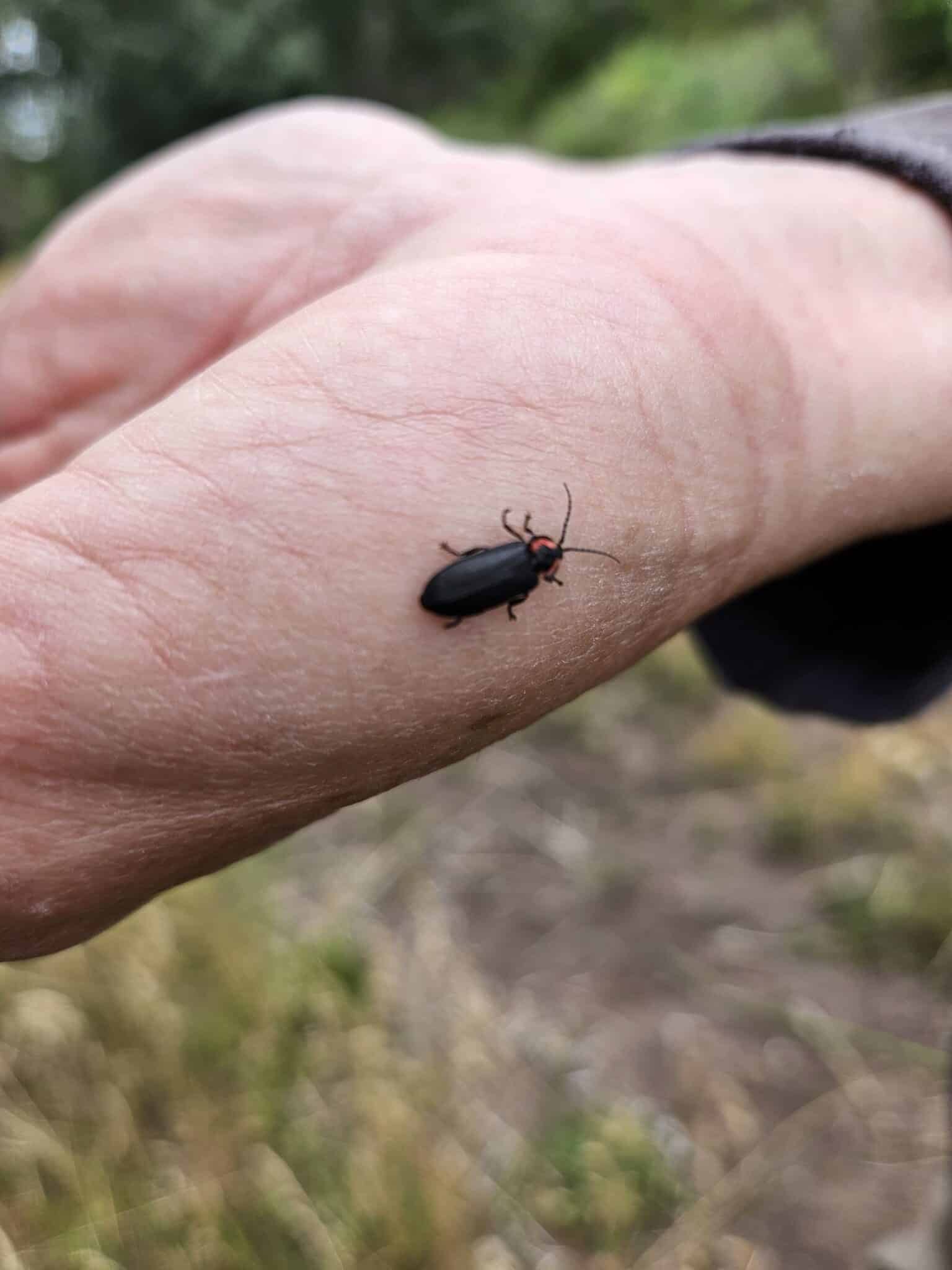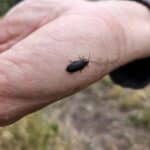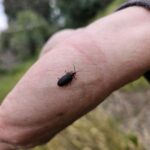Notice: Below is a list of 0 important links included on this page.
Please note that while screen readers have made significant strides, they may still lack full support for optimal web accessibility.



You must be logged in to post a comment.
This is a project of the Xerces Society, working in collaboration with the IUCN SSC Firefly Specialist Group and New Mexico BioPark Society.
Copyright © 2025 The Xerces Society •1631 NE Broadway Street, #821 • Portland OR 97232 USA
Thanks for submitting this observation! Based on the broader form and larger size, this appears to be an Ellychnia (technically now Photinus, but the database doesn’t reflect that), and the expected species based on distribution would be Ellychnia alexanderi Fender, 1969.
Some of the characteristics of Ellychnia alexanderi include the following:
– length 7.5-10.5 mm, width 3.5-5 mm
-roseate markings on the pronotum (head shield) that extend from front to back
-pubescence is black and the body does not have a “dusty” appearance
-the dark, convex central part of the pronotum (head shield) is usually finely punctured (having tiny holes) instead of being granulate (grainy/bumpy/sandy appearance)
I have changed the observation genus and species to Ellychnia alexanderi, but the observation status will remain unverified because we would probably need to examine a specimen to confidently ID this firefly.
Thanks Richard!
I am so happy to have feedback on this specimen. I have observed a few fireflies this season and have been noticing small differences between them. Thank you for the identification tips, it will be very useful for the future.